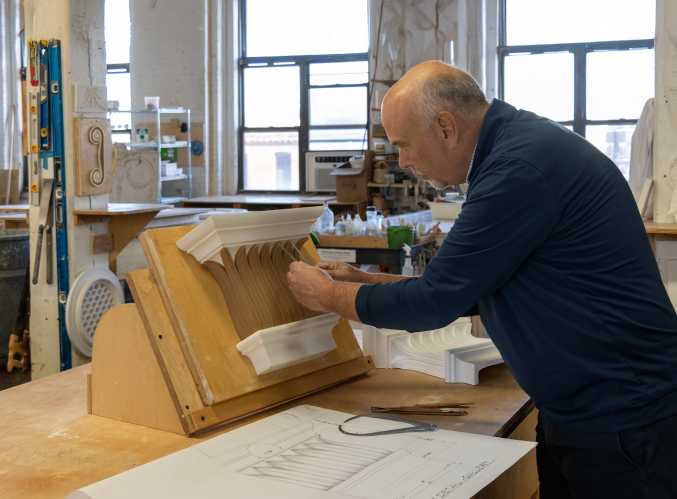New doesn’t always mean better. Distinctive vintage and antique furnishings offer an inherent level of quality and history, but a growing number of East End aesthetes are now looking to take that stalwart and storied character of the old and make it extraordinary and new.
Dan McAllister and his daughter Heather Ganguzza of Peconic’s In the Attic Too are helping their clientele do exactly that with a wide range of upcycled treasures and one-of-a-kind custom creations sure to add a bit of wonder and wow to any home.
Over the past two decades, the North Fork business has become a one-stop shop for truly unique finds, including vintage furniture, reclaimed wood, signage, housewares, industrial items, bric- a-brac and even handmade soy candles. The father and daughter share a keen eye for design, but each brings different talents to the business. McAllister does the builds and runs demolition and salvage when they reclaim wood from local barns and other structures, while Ganguzza paints the furniture and manages their retail and social media.
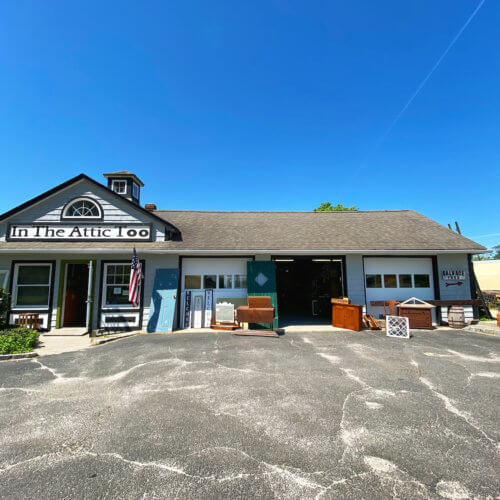
Together, they will help visitors pick through In the Attic Too’s massive selection of finds and choose what they need to commission or build their own custom piece of furniture. “Some people will bring inspiration photos, but a lot of it is design builds,” McAllister says. “We’ll design it with them and then we’ll build it. We’ll use our salvage yard for our materials, so we can go out and just kind of cull through our inventory and use what’s appropriate.”
The options feel almost limitless, and McAllister and Ganguzza continue to evolve their approach. “I started building birdhouses in late 1999–2000 just as a hobby, and I used plain materials to do that … then I built a bench, and that turned into a cabinet, then that turned into a table, and then we started doing antiques. And then that turned into adding the painted furniture,” McAllister says, recalling the early days when he was still a Southampton Town police officer, followed by three years working as an estimator for Ocean Electric, before risking it all to run their shop full time.
McAllister started part-time in Speonk for a couple years, but his job eventually forced him to put that dream aside. When he retired from the police department in 2006, he ended up even busier at Ocean Electric, so he had to let that go, too. “That was a big step, I was doing well there—I had a nice position there,” he says, adding, “It was 70-80-hour weeks, so it was a very stressful position. It was hard, but easy to make that decision.”
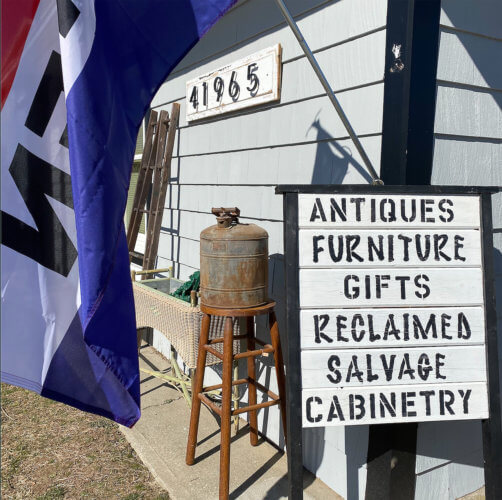
In 2009, with no other job to hold him back, McAllister opened the first In the Attic Too in Laurel, followed by the Red Salvage Barn in Jamesport five years later. “I ran the Red Salvage Barn where we did all the custom builds and the demo work—the architectural salvage,” he says, noting that his daughter then joined him as a business partner to run the Laurel shop and paint the furniture.
They finally consolidated everything at the Peconic location in October 2020, and it turned out to be an excellent decision. Since coming to Peconic, McAllister and Ganguzza say they’ve been “overwhelmingly, outstandingly” busy. “It was a great move,” he says.
Today, all aspects of In the Attic Too are in high demand. People come for salvage, raw items for their builds and all kinds of custom projects.
“Lately a lot of people are embracing colors and really fully changing pieces instead of what we used to do, which is just one color and paint the piece,” McAllister explains. “It used to be where we’d just take a dresser and paint it white, but now it’s evolved into multi-colors and combinations, and wallpaper inserted, hardware changes.” He also points out that they get regular requests for reclaimed wood, which is all sourced locally, for fireplace mantles, shiplap walls, wrapping exposed beams and a number of other applications.
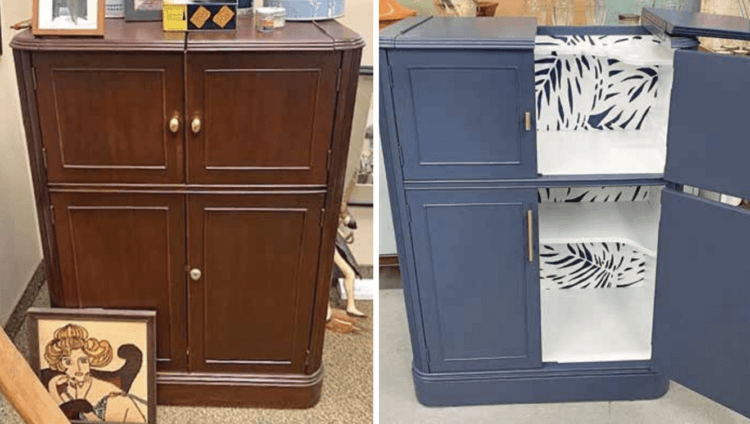
“Our customers really appreciate that their farm table was made out of a barn that came off of Indian Neck Lane, right down the road,” McAllister says, noting that they do the physical labor of deconstructing old wood buildings in exchange for the wood.
“We’ll save them three or four 30-yard dumpsters, so they’re saving $2,000-3,000 on dumpster fees, and they also feel good they get to repurpose their materials,” he continues, pointing out that some barn owners feel pangs of regret dismantling historic structures, so they’ve come up with ways to ease that discomfort. “Often we’ll build them something—we’ll build a table out of that material or some benches, a picture frame, barn doors, things like that.”
Since opening in Peconic, McAllister’s wife, and Ganguzza’s mother, Sue McAllister, has moved her candle-making business into the building. “She felt a little left out a few years ago,” he says. “She felt like she wanted to do something other than paint furniture, so she learned how to make candles at home.” Now her hand-poured, soy candle business is another part of the In the Attic Too experience.
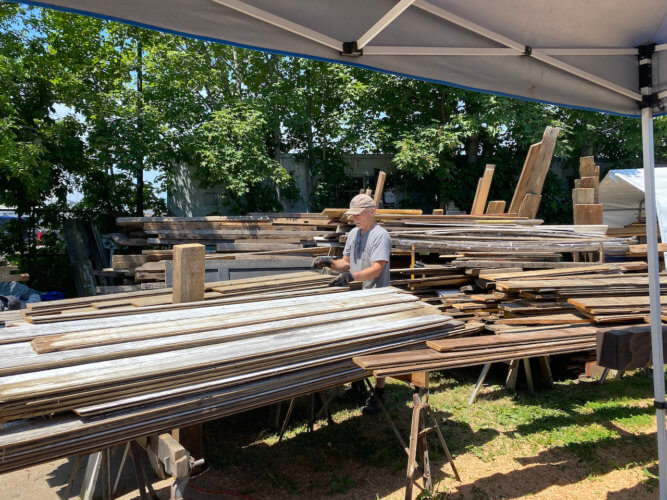
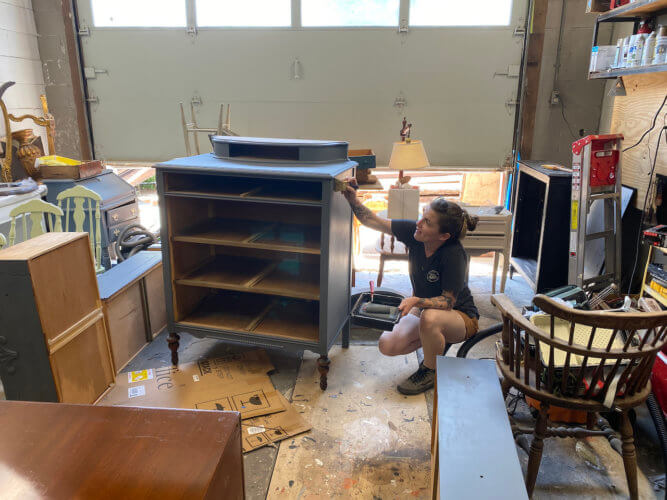
Ganguzza’s husband and her sister also work there. It’s truly a family affair, and they try to make customers feel just as welcome.
“We try to keep our prices fair. I learned early on in the business, the idea is to sell everything at an affordable price so that people are happy, and then the next time you come back you’re guaranteed to see all new stuff because we’ve turned over the inventory so fast,” McAllister says. “It might be worth $300, but I might have to wait nine months for that to sell for $300.
We turn it over quick [by selling for much less]. They’re happy and we’re happy because we love buying stuff. It’s a fun cycle.”
This article appeared in the June 2021 issue of Behind The Hedges.


